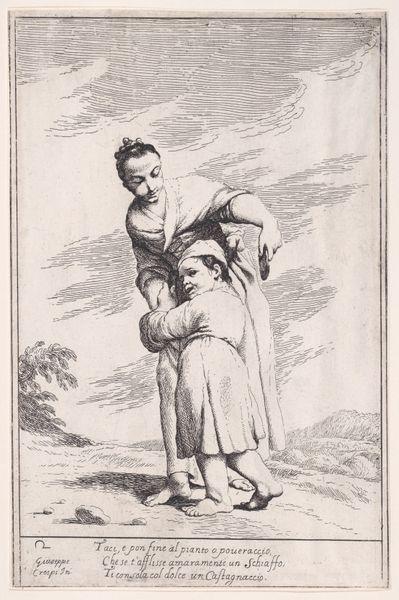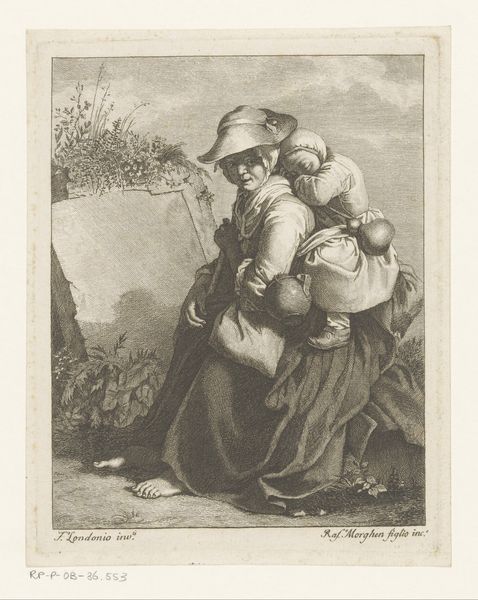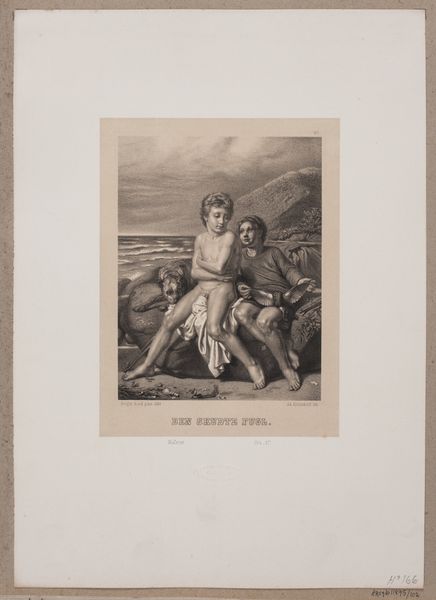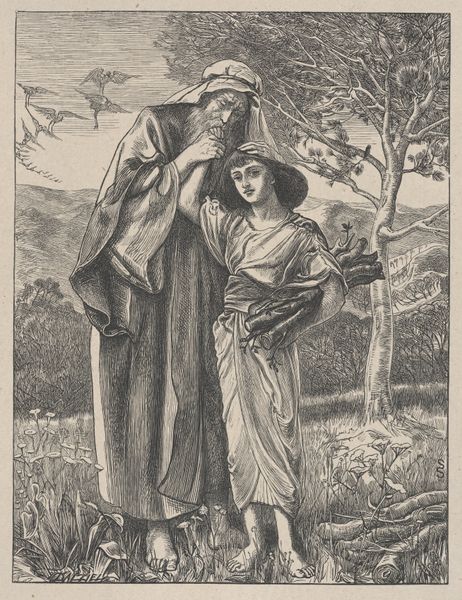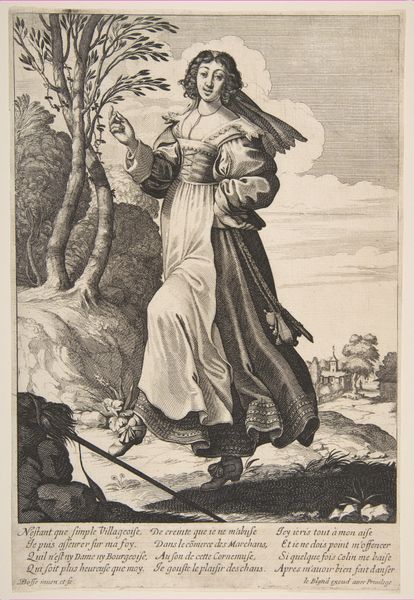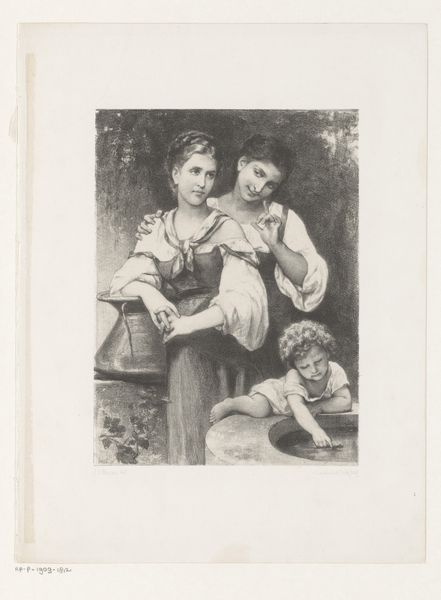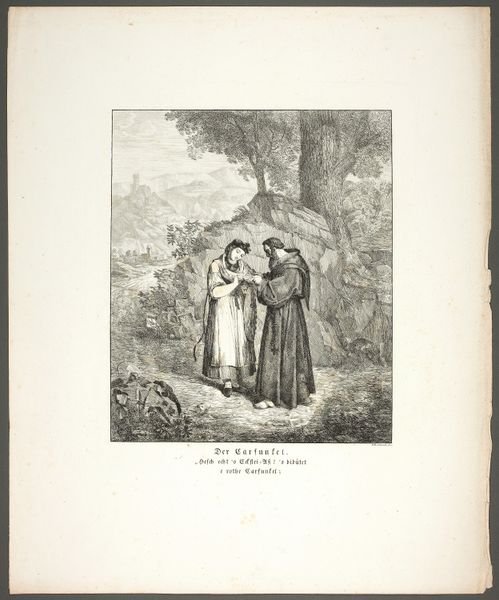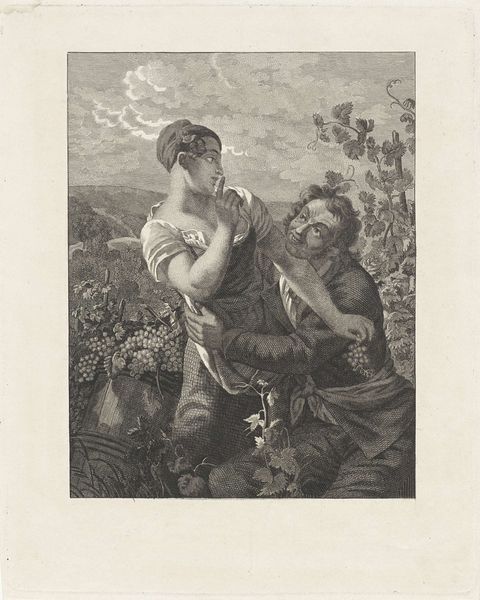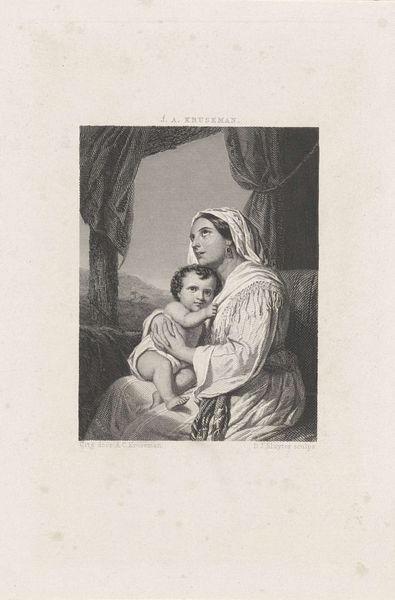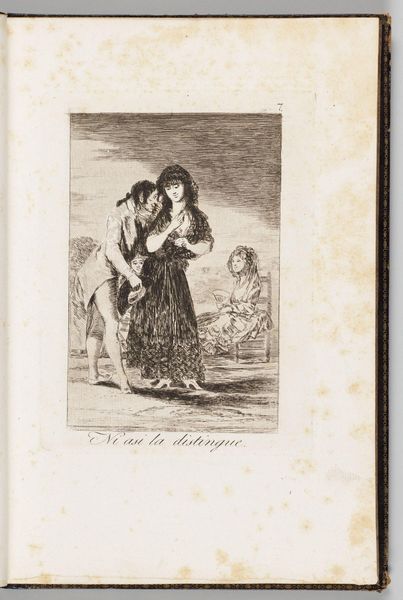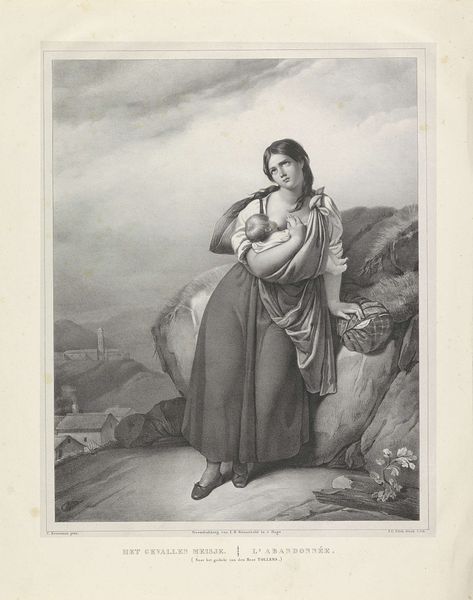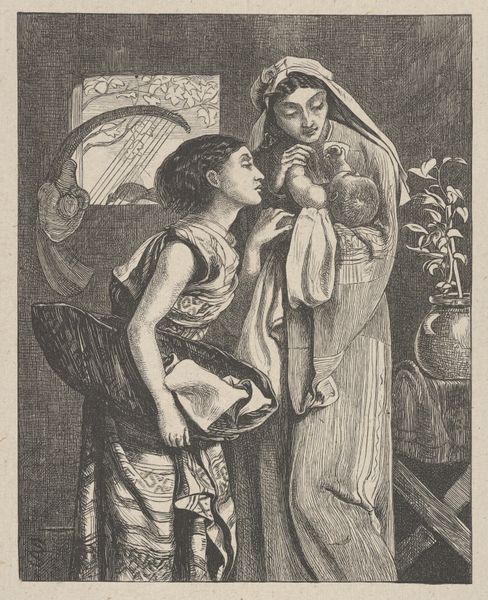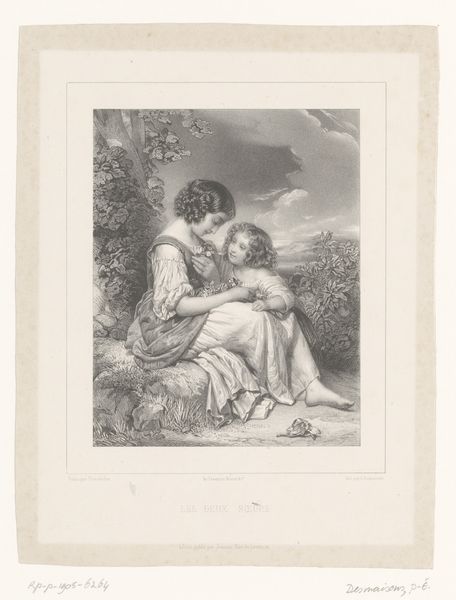
drawing, paper, ink
#
portrait
#
drawing
#
figuration
#
paper
#
ink
#
genre-painting
#
academic-art
Dimensions: height 366 mm, width 261 mm
Copyright: Rijks Museum: Open Domain
Curator: Alphons de Lang created this piece, titled “Uit de heffe des volks,” which translates to “From the Dregs of the People,” sometime between 1878 and 1879. It’s rendered in ink on paper. My first thought is how heavy the weight of responsibility seems to bear down on the woman depicted. Editor: Absolutely. There's a pronounced solemnity in her expression, even in the child's gaze. Considering the title and the period, I wonder what social narratives the artist was engaging with. Were these works commenting on the struggles of the working class? Curator: That’s a crucial question. De Lang was working within a specific artistic and social milieu, deeply influenced by academic art traditions and burgeoning realist movements. This work invites us to consider the political implications of depicting the ‘common person’ – how art at that time participated in shaping perceptions and often stereotypes of different social groups. Editor: So, in examining the piece through an intersectional lens, it prompts reflections on poverty, class, gender and even how motherhood is represented. The woman’s barefoot, her clothes simple – does the artwork reproduce the aesthetic expectations of the ‘suffering mother’ archetype of the time? Curator: Precisely. But looking at the landscape in the background, one must also inquire about land ownership, the displacement of rural communities, the political economy that dispossessed individuals and families and placed them on the margins. This work, though seemingly straightforward in its genre painting style, really sits at the intersection of several fraught socio-political dynamics of the late 19th century. Editor: So the artist's choices in representing their figures – their posture, their clothing – may act to challenge prevailing narratives or even unconsciously reproduce biases prevalent at the time. What do we make of her strong physical presence versus the dependence implied by carrying a child? How does it either disrupt or support dominant patriarchal narratives of the time? Curator: And these are precisely the type of questions we should ask, especially within the museum. It highlights how art doesn't just exist in a vacuum; it breathes within these social and cultural power dynamics. The dialogue should evolve, including perspectives from gender studies, critical race theory, and postcolonial thought, constantly contextualising our art in order to tease out these nuances. Editor: It's through those types of layered interpretations, the continuous cross-examination of the art in relation to those socio-political undercurrents that it really finds new, and relevant meaning for current generations. Curator: Precisely! It is by encouraging this active engagement that we keep these narratives and those histories alive.
Comments
No comments
Be the first to comment and join the conversation on the ultimate creative platform.

